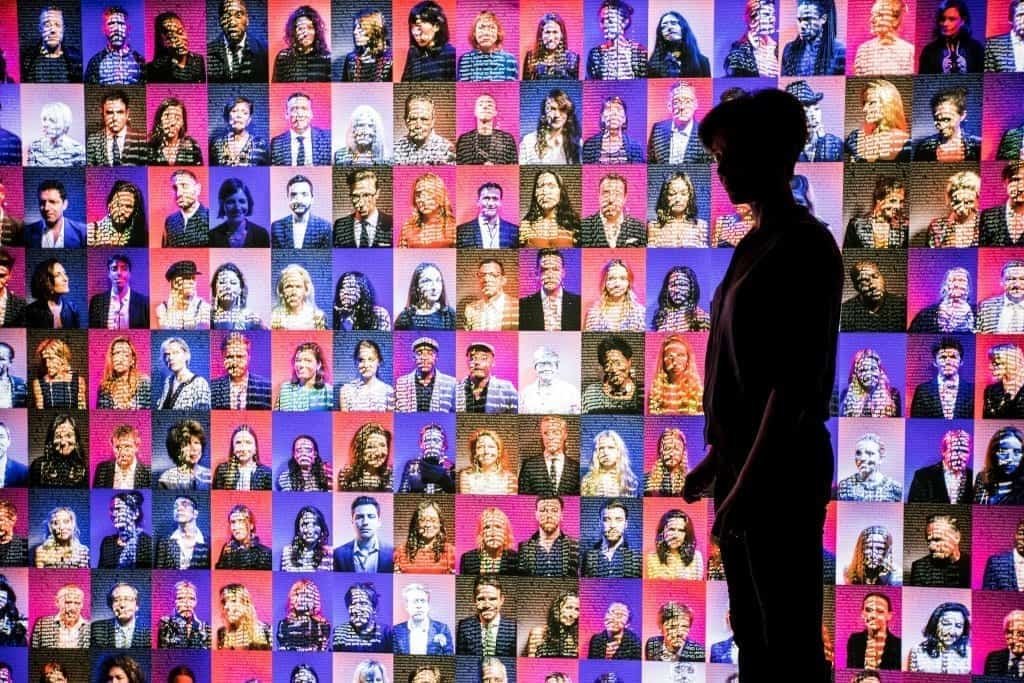Delving into humanity’s inescapable relationship with Artificial Intelligence, World Museum, Liverpool, presents a major new exhibition – AI: More than Human.
The new exhibition will be open from 10th July until 1st November 2020 and is its first UK showing outside of London.
AI: More than Human surveys the creative and scientific developments within artificial intelligence (AI) through extraordinary international artworks and a plethora of interactive and immersive playful experiences.
Taking visitors on an extremely unique and unexpected journey, this exhibition will explore the complex relationship between humans and technology in the past, present and what we can expect in the future.
Anne Fahy, Head of World Museum said: “World Museum explores millions of years of Earth’s history and the human activity that has shaped it. In this fascinating exhibition, we see just how long and how important the epic story of AI has been on human development.”

“Featuring remarkable work by leading scientists, researchers and artists, AI: More Than Human is an unmissable taste of the breadth of creativity that is being generated and inspired by algorithms and machines. It demonstrates the opportunity for us to push our creative boundaries, and the potential of exciting collaborations between humans and machines. It allows visitors to consider their own relationship with AI, and what the future may look like.
“With so many opportunities for visitors to interact with the works it is an exhibition for curious minds of all ages who want to play experience and understand this ubiquitous technology.”
About AI: More Than Human
Section 1
AI: More Than Human is divided into four sections – starting with The Dream of AI, which looks at the origins and history of AI. This section focusses on the religious traditions of Judaism and Shintoism, the sciences of Arabic alchemy and early mathematics and Gothic philosophies. It looks at how these beliefs and philosophies continue to influence our perception of and interaction with technology today, and how our fascination with creating beings, goes far back to ancient times.
Section 2
Section 2, Mind Machines, explains how AI has developed through history, charting the groundbreaking work of some of AI’s founding figures, such as Ada Lovelace, Charles Babbage and Alan Turing. Mind Machines documents pioneering computing moments, including when AI was used to beat a pro-chess player and even a human contestant on US game show, Jeopardy. A special commission explores the story of DeepMind’s AlphaGo, the first computer to defeat a professional human Go player – the Chinese strategy game with origins from 3,000 years ago. In addition to these immersive and interactive installations, this section presents artworks that use and respond to the ways AI sees images or understands language and movement, such as Anna Ridler’s Myriad and Mosaic Virus and Mario Klingemann’s piece, Circuit Training.
Another exhibition highlight is Sony’s 2018 robot puppy aibo; who gradually develops a unique and innovative personality from its database of ‘memories’, which visitors are encouraged to contribute to by interacting and playing with aibo.
Section 3
Section 3, Data Worlds examines the capability of AI to change society, as well as looking at ethical issues such as bias, truth, control and privacy. It looks at AI’s role in fields such as healthcare, journalism and retail. It features Learning to See by artist Memo Akten who has worked with Nexus Studios to create an interactive work that invites visitors to manipulate everyday objects to illustrate how a neural network (a series of algorithms) can be fooled into seeing the world as a painting. Within this section, scientist, activist and founder of the Algorithmic Justice League, Joy Buolamwini, examines racial and gender bias using facial analysis software as part of Gender Shades, a project to reveal how prejudice can find its way into technology.
Section 4
The final section, Endless Evolution, looks to the future of the human race, and where artificial life fits in. It features work by Massive Attack who encoded their seminal album, Mezzanine into synthetic DNA; Justine Emard’s beguiling Co(AI)xistence, exploring communication between human and machine, and Yuri Suzuki’s Electronium, enabling visitors to compose with AI. This final section explores the seemingly endless possibilities of AI to shape our lives.
Threaded throughout the exhibition are specially commissioned installations where visitors are encouraged to interact and engage. Including; 2065 an ‘open-world’ video game set on a virtual island by Lawrence Lek. Universal Everything’s Future You, an uncanny installation where visitors can interact with an AI version of themselves, Es Devlin’s PoemPortraits, which brings together art, design, poetry and machine learning, and Chris Salter’s Totem, a 14-metre light installation, gives a feeling of a living, breathing entity.
AI has evolved to provide many benefits in every aspect of life, from fashion, to art, music, medicine and even human rights. Our relationship with it is becoming more complex, and through this playful, interactive exhibition, we aim to explore the permeating feature of artificial intelligence. Fusing innovation, art and technology, visitors are invited to immerse themselves in this multi-sensory exhibition.
To book tickets visit www.tickets.liverpoolmuseumstickets.org.uk
For further information visit www.liverpoolmuseums.org.uk/wml/


